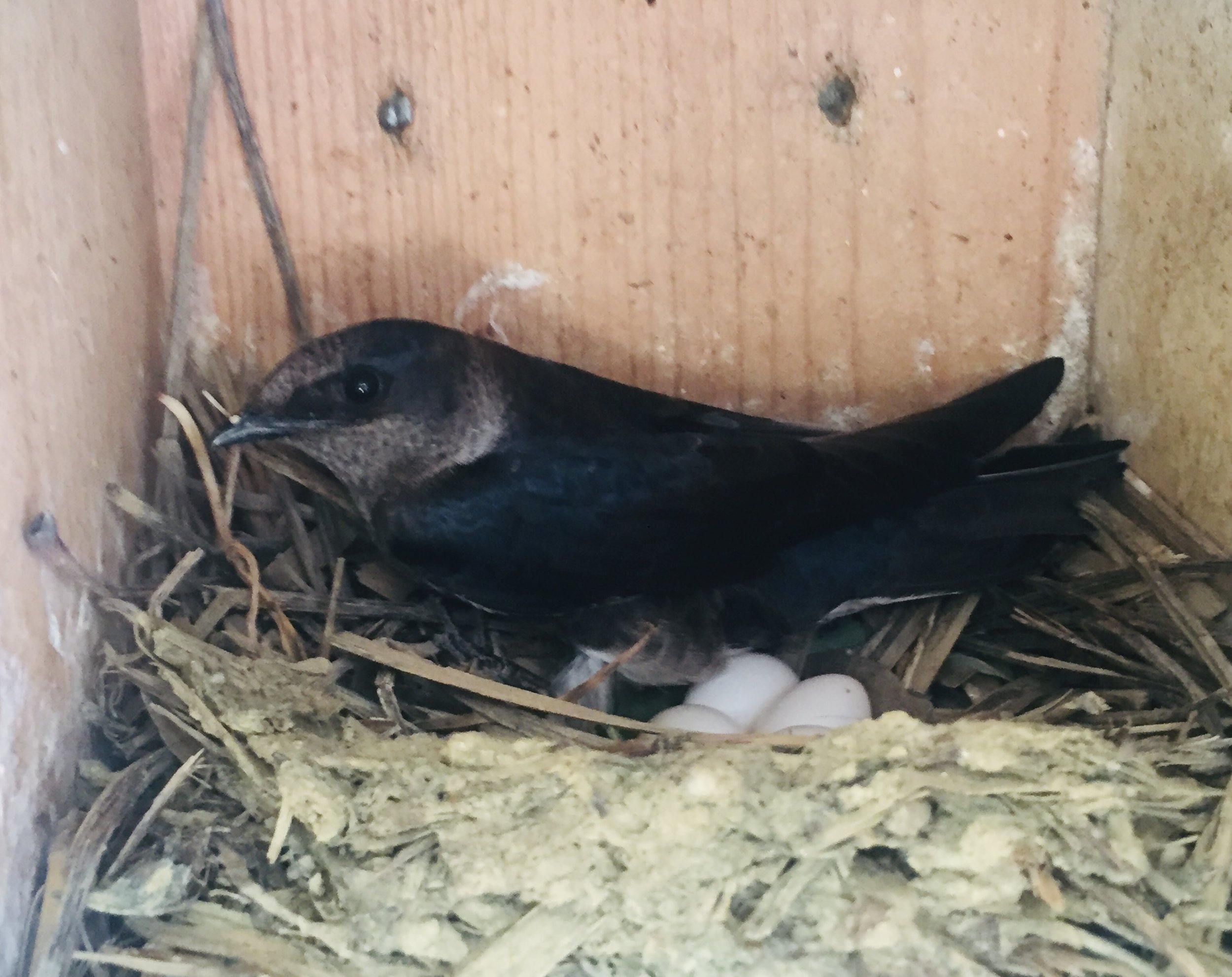Photo: Purple Martin Nestlings, Deidra Bryant
Deidra Bryant
With the season of baby birds now here, it is important for ornithologists to collect data on nest construction, successful nestling development, and overall care from adults. To do this, nest boxes must be constructed and mounted properly. If scientists are reusing a nest box from the previous season, the box needs to be cleaned out so birds can have a nice place to call home. You can build and set up nest boxes at your residence too and casually watch as birds fly in and out. However, you can also take a more involved and scientific approach to observing and understanding the reproductive biology of native birds nationwide via the Cornell Lab of Ornithology NestWatch program.
Purple Martin nestlings, Deidra Bryant
NestWatch is an interactive online program that allows you to view tips on how to build and install your own nest box, and upload your personal nest monitoring metrics to an archived database that aids in bird conservation. You can also read blog posts, annual reports from previous years (NestWatch Digest), and scientific publications regarding nesting ecology and breeding bird populations. You will have to make a free account with Cornell Lab to get the full experience though. Viewing the website is possible on multiple devices (via tablet, personal computer, smartphone) but I find that using a tablet or PC works best since the images and infographics are much larger and the text is easier to read. There are also some helpful documents that you may want to download and print from your personal computer like the Nest Check Data Sheet for when you’re in the field and don’t want to bring your electronics outside.
Deidra Bryant monitoring Purple Martin nests
Getting started is very easy. When you open the webpage you will immediately see “How To Participate.” Although it’s tempting to just select a bird on the homepage and initiate a nest plan, the first and most important step is to read the Code of Conduct and take the short quiz to get certified. The test is a safety measure used to minimize risk of accidentally damaging the nest, causing parental desertion, and attracting predators to the nest. The test also communicates planning tips so you know what to expect and how to quickly, accurately, and safely record useful data.
So, you have your nest box(es) set up in the proper manner using the provided species specific structure plans, followed tips on how to deter predators, and placed it/them in its respective habitat…what do you do now? You wait. You monitor your nest every 3-4 days and wait for someone to safely lay their eggs in the shelter you made for them. Use this time to familiarize yourself with how to enter data online using the multiple data entry tutorial videos from the LEARN tab on the website. If you’re lucky and get a resident, make sure you remember the Code of Conduct and keep your paper records safe from damage such as water stains, page tears, bird excrement, etc. Those notes need to be digitized after each visit or after a nesting attempt is complete. In graduate school I surveyed over 300 Purple Martin (Progne subis) nests in at least 10 sites in South Central Pennsylvania. I had several paper datasheets similar to the one used in NestWatch for every site and used them to excruciatingly transfer numerous results to an Excel spreadsheet.
Purple Martin on nest, Deidra Bryant
As I write about Cornell University’s NestWatch program I think of the kind Amish families I met when I monitored their martin birdhouses for research. Young children and their parents would come outside and tell me what other interesting birds they saw flying around, and sometimes their neighbors would join in and observe if I brought my drone to geofence the site. One empty nester (no pun intended) would always ask me to sit with her on her porch and chat about gardening tips and her engaged sons while we watched the martins fly in and out of their nest gourds with bees in their beaks. One family had binders with laminated data sheets that were over a decade old! I also remember how I’d often come home with gifted bags of fruit and veggies from their orchard and/or farm when it was time to leave. It was such a wonderful experience with so many people and I’ll never forget it. Although we currently live in an age where our community often communicates through a screen, I think where NestWatch succeeds is employing citizen science to not only bring us together to achieve something bigger than ourselves individually, but also to step outside and talk to friends and neighbors about how nest monitoring can be a memorable experience.



